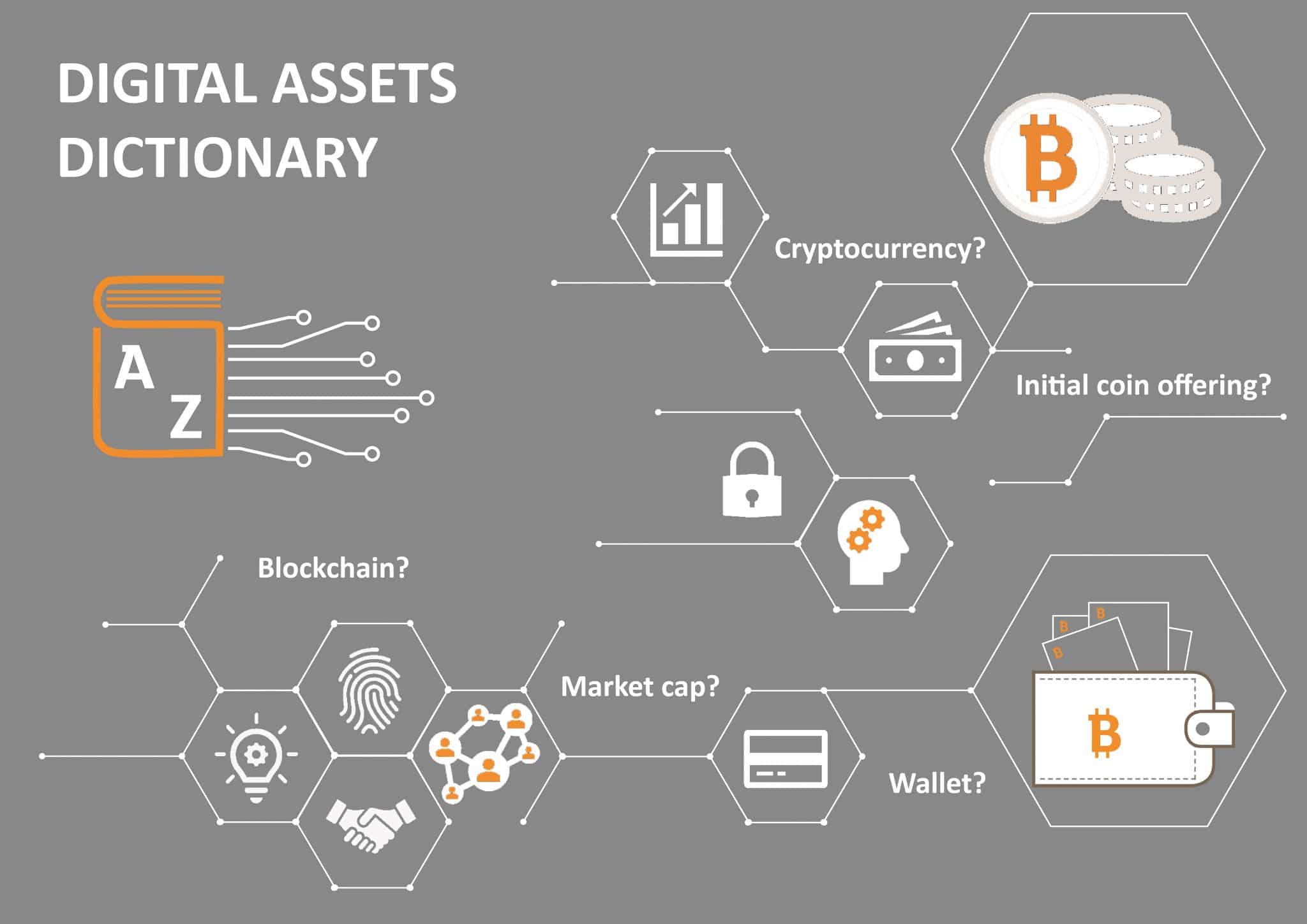The more time you spend exploring the world of digital assets, the more technical terminology there is to navigate. Blockchain may be a familiar term, but what’s the difference between a permissioned and unpermissioned blockchain? What makes a wallet hot or cold? And could you recognise an ICO?
Here’s our guide to these terms and more. While we’ve broken with the tradition of an alphabetical dictionary or glossary, we hope this will help to make the crypto world less cryptic.
Let’s start with one of the more familiar terms, and the underlying technology.
Blockchain
A distributed immutable ledger made up of blocks containing digitally recorded data that are chained together using cryptography. There are various types:
- Permissioned: a blockchain where a person must have specific permission to access the ledger. The ledger itself may have one or more specific owners, which could be a company or a government body for example. An owner could prevent a transaction being recorded on the chain.
- Un-permissioned is a blockchain where there is no required permission to access and it cannot be owned by any individual. Therefore no one can prevent a transaction from being recorded on the ledger, the integrity of which is determined by participants reaching consensus.
- Private: permissions are only held and controlled by a central body leading to a closed network.
- Public: a completely open network where anyone can choose to participate in transactions on, or contribute to the maintenance of, the blockchain.
Where two blockchains run simultaneously on different parts of the network, each chain is called a fork.
If accidental, the network eventually abandons one fork by consensus.
An intentional fork may be used to fix issued related to hacking or a bug.
A hard fork is the result of a change in the protocol / processes of a blockchain resulting in new rules which are incompatible with the existing blockchain.
You can read our brief history of blockchain here.
Transactions on the blockchain network are verified and then added to the chain through mining. This involves the use of computers to solve complicated cryptographic problems.
When creating blockchain, there was one obvious stumbling block: how to persuade people to lend their computer processing power in order to verify and keep a record of all the transactions. The answer is to reward them with the digital asset that is traded across that particular blockchain: an asset whose release is triggered when one of the cryptographic problems is solved.
The representation of that digital asset is known as a token or coin. Where there’s a coin, there’s a currency. And the involvement of cryptography leads us to our next familiar term…
Cryptocurrency
A digital coin or token that is designed to act as a medium of exchange. Cryptocurrencies are not backed by any government or state and operate independently. Therefore, technically there is no inherent value, with any value being based purely on supply and demand. Examples include Bitcoin and Ethereum.
There are several terms relating to tokens:
- Utility token: a digital token that is designed to provide holders / users with access to a service or product. These tokens do not give the holder any ownership of a company or any other underlying asset. They can be traded but are not intended to be a medium of exchange. These tokens derive their value based on the right to a service or product.
- Security token: a security token is a digital representation of a traditional security, such as a share or a bond. It will often be common in nature by providing an ownership stake in a legal entity, the right to receive cash (or another asset), a vote in any decisions to be made or a residual interest. The value could be derived from the value of the entity or the right to receive a share of profits, cash or another asset in the future.
- Asset-backed token: a digital representation of ownership of an actual physical asset which could be physical property or a commodity such as gold. The value is derived from the value of the underlying asset.
Significant within blockchains are smart contracts: contracts whose terms and conditions are recorded as computer code rather than in a document. These are self-executing contracts that have no need for a central authority or legal system. Consideration for the provision of goods or services can be automatically settled once the contract conditions (e.g. delivery of goods / completion of service milestones) have been met.
Other useful terminology
Initial coin offering (ICO): where new coins or tokens are sold in advance in exchange for capital. It is essentially a mechanism to raise capital for a project.
Fiat money – a government issued currency e.g. GBP, EUR, USD.
DApp: an abbreviation for decentralised application that has its source code running on a decentralised peer to peer blockchain network.
Whitepaper: a proposal document or concept outline used to attract potential investors to a project and provide information about the project and its benefits.
Wallet: a storage location for digital assets. Each with a unique public address and private key allowing the owner to authorise transactions. There are different types:
- Hot: a wallet connected to the internet which could be susceptible to hacking.
- Cold: a wallet disconnected from the internet, meaning it cannot be hacked online.
Market cap: the total value held in a cryptocurrency.
Liquidity: the availability of assets or the ability of assets to be converted into fiat without dramatically affecting market prices.
Despite all the terminology, you’ll find clear guidance from our cryptocurrency and financial services specialists. Find out more on our financial services pages or contact us.


